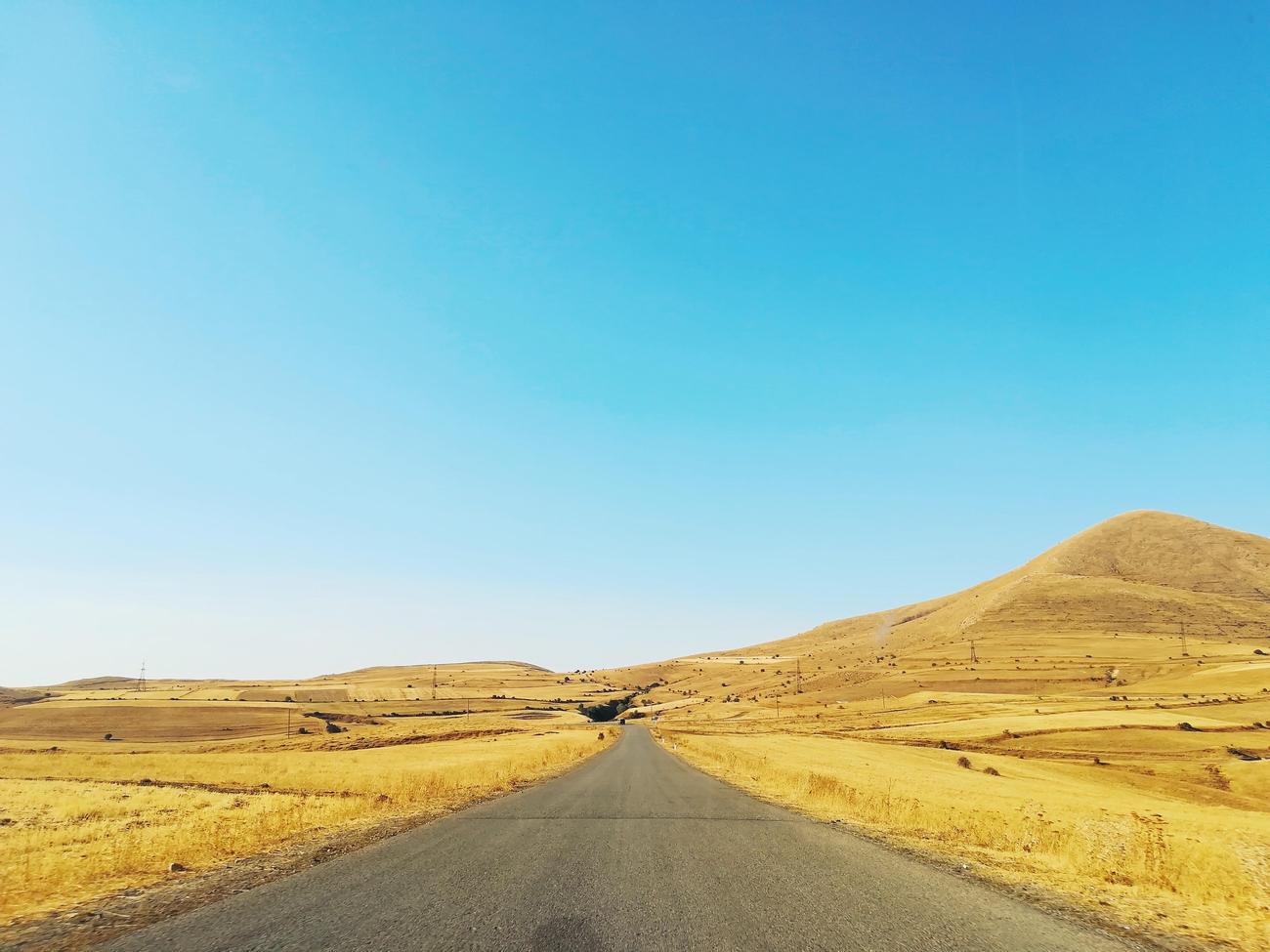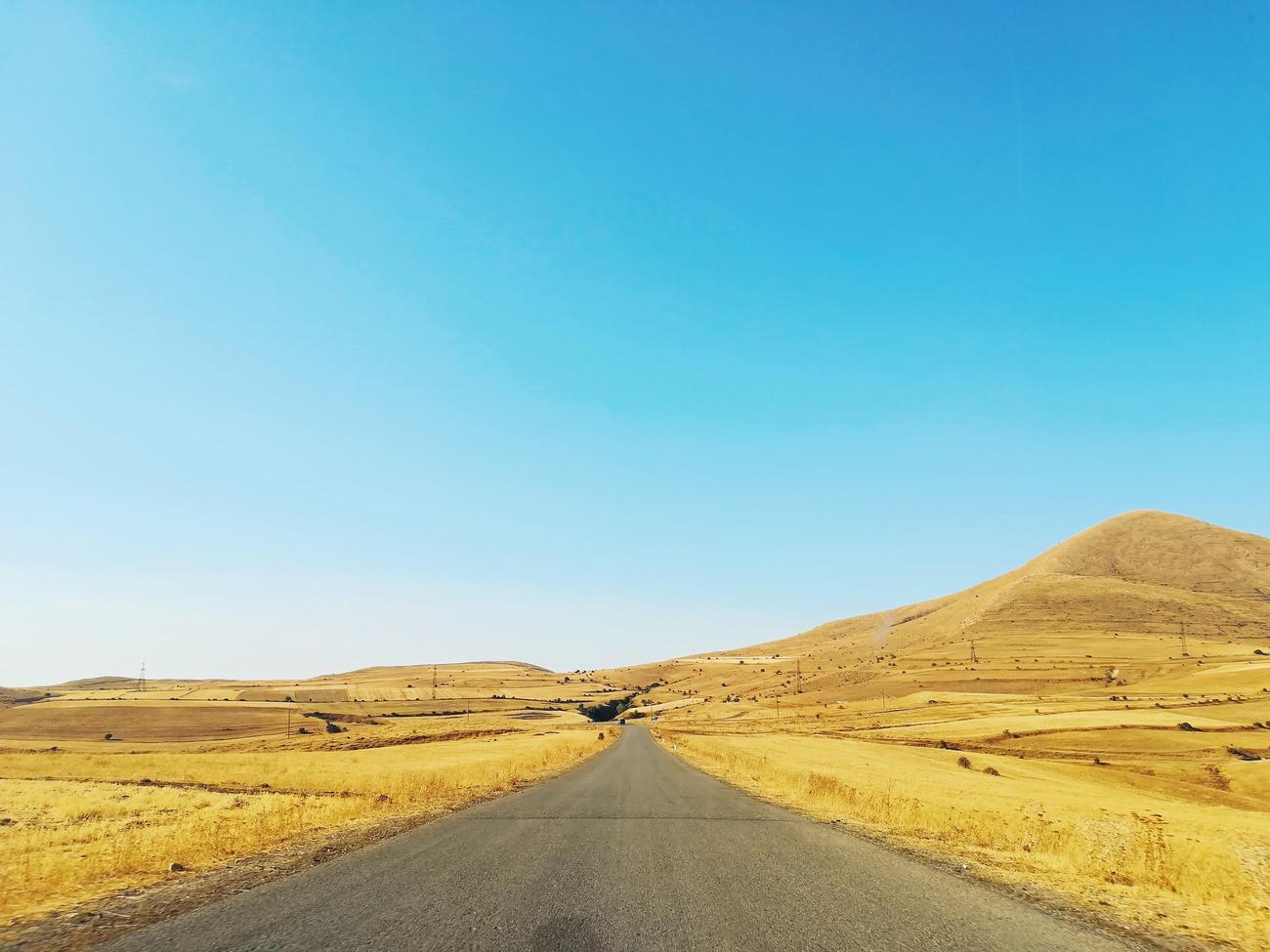Welcome to the captivating world of Armenia, a nation that holds the key to ancient wonders and vibrant traditions. In this article, we will embark on a journey that unveils the secrets of this enchanting country. From the mesmerizing city of Yerevan, one of the oldest cities in the world, to the fascinating winery in Areni, which stands as the oldest in the world, prepare to be amazed by the rich history and hidden gems that await you in Armenia. Let’s delve into the depths of this extraordinary nation and discover the allure of its ancient wonders and vibrant traditions.

Facts About Armenia
Armenia, a captivating nation nestled in the Caucasus region, is an embodiment of ancient wonders and vibrant traditions. Let’s delve into some intriguing facts about this enchanting country that will surely leave you in awe.
1. Armenia: A Cultural Mosaic
Armenia boasts a unique cultural landscape, predominantly comprising one ethnic group, the Armenians, who make up the majority of the population. With their rich traditions and deep-rooted heritage, Armenians have preserved their distinct identity over centuries, making Armenia a true melting pot of cultures.
“Armenia embraces its cultural diversity, immersing visitors in a vibrant tapestry of traditions and customs.”
2. Trailblazing the Path to Christianity
Did you know that Armenia holds the honor of being the first country to adopt Christianity as its state religion? In 301 AD, King Tiridates III declared Christianity as the official faith, paving the way for centuries of religious and cultural significance.
“Armenia’s embrace of Christianity cemented its position as a cradle of faith, welcoming pilgrims from around the world.”
3. The Birthplace of Sacred Architecture
Armenia takes pride in being home to the world’s first church, an architectural marvel known as the Etchmiadzin Cathedral. Built in the 4th century AD, this historic landmark serves as the spiritual center of the Armenian Apostolic Church, underscoring Armenia’s enduring connection to its religious roots.
“Etchmiadzin Cathedral stands as a testament to Armenia’s rich ecclesiastical heritage, captivating all who lay eyes upon its grandeur.”
4. Yerevan: Where Ancient Meets Modern
As you take a stroll through Yerevan, Armenia’s capital city, be prepared to walk through history. Founded over 2,800 years ago, Yerevan is one of the world’s oldest continuously inhabited cities. Its vibrant streets, adorned with modern architecture and ancient landmarks, provide a fascinating glimpse into Armenia’s past and present.
“In Yerevan, the ancient whispers of history harmonize with the pulsating rhythm of contemporary life, creating a city like no other.”
5. The Art of Lavash
Armenian cuisine is a tantalizing fusion of flavors, with one delicacy capturing hearts and palates worldwide: lavash. This delectable flatbread, a staple of Armenian meals, symbolizes the country’s culinary heritage. In recognition of its cultural significance, lavash was inscribed on UNESCO’s Representative List of the Intangible Cultural Heritage of Humanity in 2014.
“Lavash: a culinary masterpiece, reflecting Armenia’s passion for artistry, tradition, and communal dining.”
6. A Chess Nation
Armenia’s love affair with chess runs deep. The game is not just a casual pastime; it is a mandatory subject in Armenian schools. This emphasis on chess education has produced numerous world-class players, propelling Armenia to the forefront of chess dominance on the global stage.
“In Armenia, chess is more than just a game; it is a fuel for strategic thinking, fostering a culture of deep intellectual engagement.”
7. A Haven for Feathered Friends
Armenia’s diverse landscapes and favorable climate make it a paradise for birds. With over 345 species inhabiting the country, it offers breathtaking opportunities for avian enthusiasts. From the majestic Armenian gull to the elusive Caucasian black grouse, Armenia’s skies are alive with a symphony of wings.
“Armenia’s natural splendor beckons to bird lovers, where they can witness the captivating dance of feathers against nature’s picturesque backdrop.”
8. A Landlocked Gem
Nestled amidst neighboring Azerbaijan, Georgia, Iran, and Turkey, Armenia is a landlocked country with abundant riches. While devoid of direct access to the sea, Armenia compensates with spectacular mountain ranges, lush valleys, and pristine lakes, serving as a testament to its resilience and resourcefulness.
“Armenia, the sparkling emerald amidst towering giants, mesmerizes with its landlocked grandeur, offering a gateway to awe-inspiring landscapes.”
Intrigued by these facts about Armenia? Join me as we embark on a journey, uncovering the hidden wonders and vibrant traditions that captivate all who venture into this enchanting nation. [facts about armenia]
Armenia is an ancient country with a rich cultural heritage. Delve into the enchanting world of Armenian culture and discover fascinating facts you never knew! From traditional dances to unique customs, there is so much to explore. Learn about the impressive Armenian alphabet, which dates back to the 5th century and is still used today. Immerse yourself in the splendor of Armenian churches, renowned for their architectural beauty and spiritual significance. Uncover the captivating history of this remarkable nation, from ancient civilizations to modern-day triumphs. And of course, no exploration of Armenian culture would be complete without indulging in the mouthwatering delights of Armenian food. Discover the secrets behind beloved dishes like dolma and lavash. So, join us on this incredible journey and explore the wonders of Armenia!
Check out some intriguing facts about Armenian culture, including their traditional dances and customs, by clicking => facts about Armenian culture.
Delve into the unique and delicious world of Armenian cuisine, and learn about iconic dishes like lavash and dolma, by clicking => facts about Armenian food.
Explore the fascinating origins and significance of the Armenian alphabet, which dates back to the 5th century, by clicking => facts about Armenian alphabet.
Uncover the architectural beauty and spiritual significance of Armenian churches, by clicking => facts about Armenian church.
Discover the captivating history of Armenia, from ancient civilizations to modern-day triumphs, by clicking => facts about Armenian history.
Remember, this is just the beginning of your journey through the wonders of Armenia. From its vibrant culture to its mouthwatering food, this ancient country has so much to offer. So, don’t hesitate to click on the links above and start exploring!
Yerevan: A Timeless City Steeped in History
Yerevan, the capital and largest city of Armenia, holds a remarkable distinction—it is one of the oldest cities in the world, boasting a rich history that stretches back over 2800 years. Founded in 782 BC, Yerevan, originally known as Erebuni, predates even Rome, making it a true treasure trove of ancient wonders and cultural traditions. Today, as you walk its streets and immerse yourself in its vibrant atmosphere, you can’t help but feel the weight of its historical significance. Let’s delve into the captivating story of Yerevan, the Pink City, and uncover the secrets it holds.
Birthed in the depths of time, Yerevan has stood as a continuous testament to human resilience, continuously inhabited throughout the centuries. Its age-old identity is evident in every corner, and as you wander through its streets, you’ll witness the amalgamation of ancient architecture with modern structures. The famed Soviet-era buildings, crafted from stunning pink stones, grace the cityscape, bestowing upon it the moniker of Armenia’s Pink City. These structures have a peculiar trait—their color shifts throughout the day, dancing with the sunlight and offering a visual spectacle unlike any other.
As Armenia’s capital, Yerevan has played a pivotal role in its history, serving as the beating heart of political and diplomatic institutions. It has been a witness to countless milestones in the country’s journey. The city’s origins were characterized by homogeneity, with Armenians being the first inhabitants. However, in the 15th century, the arrival of Muslim soldiers brought diversity to Yerevan’s population, marking a turning point in its cultural fabric. Yet, it has maintained a sense of unity, representing the essence of Armenia within its diverse tapestry.
Nestled along the Hrazdan River in the Ararat Plain, Yerevan is not just an administrative and cultural center—it is steeped in symbolism and holds records that captivate the imagination. This ancient city boasts its own alphabet, a testament to Armenia’s rich linguistic heritage. In fact, Yerevan is also home to the world’s oldest winery, showcasing the country’s long-standing love affair with wine production. The spirit of innovation is alive in Yerevan, with the city being home to a record-breaking cable car, offering breathtaking views of the surrounding landscapes.
Yerevan’s 2799th birthday celebrations in 2017 were a testament to the enduring spirit of this time-honored city. As the festivities unfolded, it became increasingly clear that Yerevan’s history is entwined with that of Babylon and Rome, having been born three decades before the Eternal City. This realization further solidifies Yerevan’s position as one of the world’s oldest cities, a living testament to mankind’s enduring pursuit of civilization.
In conclusion, Yerevan, the Pink City, beckons curious souls to uncover its ancient wonders and vibrant traditions. With each step, you’ll be transported through time, walking on the very roads that have bore witness to history’s unfolding. From its ancient origins to its modern marvels, Yerevan offers an authentic glimpse into Armenia’s captivating nation. As you explore this enchanting city, let the shadows of the past guide your path, and in doing so, discover the soul of the world’s enduring civilizations.
“In the heart of Yerevan, the echoes of ancient civilizations resound, inviting you to delve into the depths of time and embrace the beauty of the human spirit.”
11. Winery in Areni is the oldest in the world
Hidden within the enchanting landscapes of Armenia lies a remarkable treasure that has captivated the attention of wine enthusiasts and archaeologists alike. Tucked away in the Areni-1 cave, located in the Vayots Dzor region, is the oldest winery in the world. Dating back to an astonishing 4100 BC, this winery stands as a testament to Armenia’s rich history and its deep-rooted connection to the art of winemaking.
Imagine stepping into a dimly lit cave, carefully exploring its ancient chambers, when suddenly you stumble upon remnants of an ancient civilization. This is the awe-inspiring experience that awaits you at the Areni-1 cave. As you wander through its hallowed halls, you’ll encounter the very instruments that were once used to press grapes and produce wine over 6,000 years ago. Wine presses, fermentation vats, jars, and cups transport you back in time, allowing you to witness the ingenuity and craftsmanship of our ancestors.
But what sets this winery apart from all others is its age. The winery in Areni predates any other winemaking facility in the world by at least a thousand years. This remarkable fact not only puts Armenia on the map as the birthplace of winemaking but also showcases the innovative spirit of its ancient inhabitants. Imagine the expertise and knowledge required to create a flourishing winemaking industry during a time when the world was still in its infancy.
The significance of the Areni-1 winery extends beyond its age. Archaeologists excavating the cave made an astonishing discovery – V. vinifera seeds and vines. These findings reveal that the inhabitants of ancient Armenia were cultivating the same grape variety that is used today to produce some of the finest wines in the world. It’s a testament to the enduring nature of Armenia’s winemaking heritage and the deep respect its people have for their land.
As you explore the Areni-1 cave, you’ll also come across burial sites and artifacts from the Copper or Chalcolithic age, providing further insight into the lives and customs of our ancestors. This unique combination of winemaking history and archaeological wonders makes the Areni-1 cave a must-see destination for any traveler venturing through southern Armenia.
The discovery of the world’s oldest winery in the Areni-1 cave was made in 2007 by an Armenian-Irish excavation team. Since then, it has garnered international attention and solidified Armenia’s place as a pioneering force in winemaking. It’s a testament to the passion and expertise of the local winemakers who continue to carry on this ancient tradition, passing down their knowledge from generation to generation.
The story of the oldest winery in the world is just one of the many fascinating tales that Armenia has to offer. From its magnificent religious sites to its vibrant traditions and breathtaking landscapes, this captivating nation continues to inspire and delight travelers from all corners of the globe. So come, embark on a journey of discovery as you unravel the mysteries of Armenia, one sip at a time.
“The Areni-1 cave in Vayots Dzor, Armenia is not just another winery – it’s a window into the ancient world, where wine was not just a drink, but a symbol of civilization and culture.”
Armenia: A Hidden Gem in the South Caucasus
[youtube v=”8Bz5B1Y5yRc”]
Armenia, also known as “Hiyastan” by the locals, is a country that often goes unnoticed on the global stage. Located in the South Caucasus region of Eurasia, Armenia is a country that offers a wealth of history, culture, and natural beauty, all at a fraction of the cost compared to other European destinations.
Situated to the north and east of Armenia are Georgia and Azerbaijan, while its southern, eastern, and western borders are shared with Iran and Turkey. With a population of approximately 3 million people, Armenia was once a part of the Soviet Union but gained recognition worldwide after the Velvet Revolution in 2018. This revolution sparked curiosity among many, eager to see the changes taking place in this small yet dynamic country.
Upon arrival at Yerevan’s International Airport, visitors are greeted with a pleasant surprise—a large bottle of wine and freshly fried food. This sets the tone for the journey, promising both adventure and culinary delights. While the Armenian economy has evolved from being primarily agricultural under Soviet rule, agriculture remains significant. However, the country still faces challenges due to the breakdown of former Soviet trading patterns and the ongoing conflict with Azerbaijan over Nagorno-Karabakh. Moreover, Armenia’s relations with Turkey have historically been hostile, leading to the closure of Azerbaijani and Turkish borders, which have adversely affected the economy. Despite these challenges, Armenia takes pride in its production of cognac, brandy, wine, and other agricultural products, such as dried fruits.
The recent revolution in Armenia was a turning point for the country. The nomination of Nikol Pashinyan for the post of Prime Minister led to a series of protests that ultimately resulted in the resignation of the long-standing Prime Minister, Serzh Sargsyan. This revolution propelled Armenia to a higher ranking on the Reporters Without Borders index, reflecting improved press freedom and democratic values. However, while the revolution brought positive changes, there is still room for improvement, particularly with regards to the economy. Salaries continue to be low, with the average income hovering around $300 per month, or even less according to local residents.
Armenia’s geographical landscape is stunning, with its mountainous terrain and diverse scenery. The average altitude in the country is around 5,900 feet, or 1,800 meters above sea level, offering breathtaking views and a cooler climate. The summer months are warm, with average temperatures of 77°F or 25°C in June and August. International tourism in Armenia has been on the rise, with visitors primarily coming from Russia, Iran, and the United States. In 2018 alone, 1.6 million people visited the country, and this number continues to grow by approximately 10% each year.
One of Armenia’s most iconic landmarks is Mount Ararat, historically part of the country but now located in Turkey. Despite this, Mount Ararat is still considered a symbol of Armenian land and identity. Another testament to Armenia’s rich history and culture is its numerous monasteries. One such example is the Geghard Monastery, a medieval complex partially carved out of a mountain. Surrounded by cliffs, this UNESCO World Heritage site is a marvel to behold.
In the capital city of Yerevan, one can experience a mix of the old and the new. As you wander the streets, you’ll find vendors selling a variety of goods, dilapidated housing blocks from the Soviet era, and garages hidden within the inner yards. However, as you approach the city center, you’ll be greeted by modern architecture and fresh, pink buildings made from local volcanic pink tuff stone. Some popular attractions in Yerevan include Republic Square, the Cascade Complex, and the Armenian Genocide Memorial. The city also offers a vibrant arts and culture scene, with jazz music being a particular favorite.
Public transportation in Yerevan includes a subway system, which was opened in 1981 and now boasts 10 stations. The city’s extensive history is evident through landmarks like the Erebuni Fortress, dating back over 2,800 years, and the Black Fortress, popular for its beautiful hilltop views. Additionally, Armenia’s second-largest city, Gyumri, is known for its textile industry and serves as a cultural hub for the region.
Armenia’s commitment to preserving its heritage is evident in Vagharshapat, a city known for its religious significance. The Etchmiadzin Cathedral, considered the oldest cathedral in the world, stands as a testament to Armenia’s deep-rooted religious traditions. The city is often referred to as the “Second Vatican” due to its concentration of religious buildings and cultural importance.
Armenia’s natural beauty extends beyond its historical sites and cities. Lake Sevan, the largest freshwater lake in the Caucasus, is a popular tourist destination, offering picturesque landscapes surrounded by mountains. The area is also home to the Sevanavank Monastery, nestled amidst captivating canyons and breathtaking views.
Armenians are known for their love of chess and backgammon, with chess being a mandatory subject in local schools. The country has produced numerous world-class chess players, making Armenia a prominent force in the chess world. Armenians also take great pride in their country, regardless of where they reside. The Armenian diaspora, consisting of around 6 million people worldwide, plays an essential role in the country’s development and community welfare.
The events of 1915, known as the Armenian Genocide, had a significant impact on the Armenian population, with millions forced to relocate to other countries. However, today, Armenian philanthropists are actively contributing to the country’s progress, investing in the economy, and restoring parks and cultural heritage sites.
Language plays an interesting role in Armenia, with locals incorporating the French word “merci” into their everyday vocabulary to express gratitude. Music is also deeply ingrained in Armenian culture, and Yerevan boasts several venues that showcase local jazz talent.
Armenia’s rich history, beautiful landscapes, and vibrant culture continue to captivate visitors each year. From ancient ruins to stunning monasteries, there is something for everyone to explore and enjoy. So, why not immerse yourself in the wonders of Armenia and experience its unique charm firsthand?
FAQ
Question 1: How old is Yerevan, the capital of Armenia?
Answer 1: Yerevan is over 2800 years old and was founded in 782 BC. It is one of the oldest continuously inhabited cities in the world.
Question 2: Why is Yerevan known as Armenia’s Pink City?
Answer 2: Yerevan is known as Armenia’s Pink City because of its Soviet-era buildings made of pink stones. The color of the buildings changes throughout the day based on the sunlight.
Question 3: What is the significance of the Areni-1 cave in Armenia?
Answer 3: The Areni-1 cave in Vayots Dzor, Armenia is home to the world’s oldest winery, dating back to 4100 BC. It is known for its wine press, fermentation vats, jars, and cups. The discovery of V. vinifera seeds and vines in the cave makes it a significant archaeological site.
Question 4: How old is the winery in the Areni-1 cave?
Answer 4: The winery in the Areni-1 cave is estimated to be at least a thousand years older than the second oldest winery discovered in the West Bank. Its age dates back to around 4100 BC.
Question 5: What can visitors find in the Areni-1 cave besides the winery?
Answer 5: Besides the winery, the Areni-1 cave also contains burial sites and other artifacts from the Copper or Chalcolithic age. This makes it a must-see stop for travelers visiting Noravank Monastery, Areni Winery, or Southern Armenia.
- Star Ring Trends: Etsy vs Amazon - March 28, 2025
- Boost Pollinator Habitats: Baby Blue Eyes Sustainable Farming Guide - March 28, 2025
- Protect Big Black Bears: Effective Conservation Strategies - March 28, 2025
















